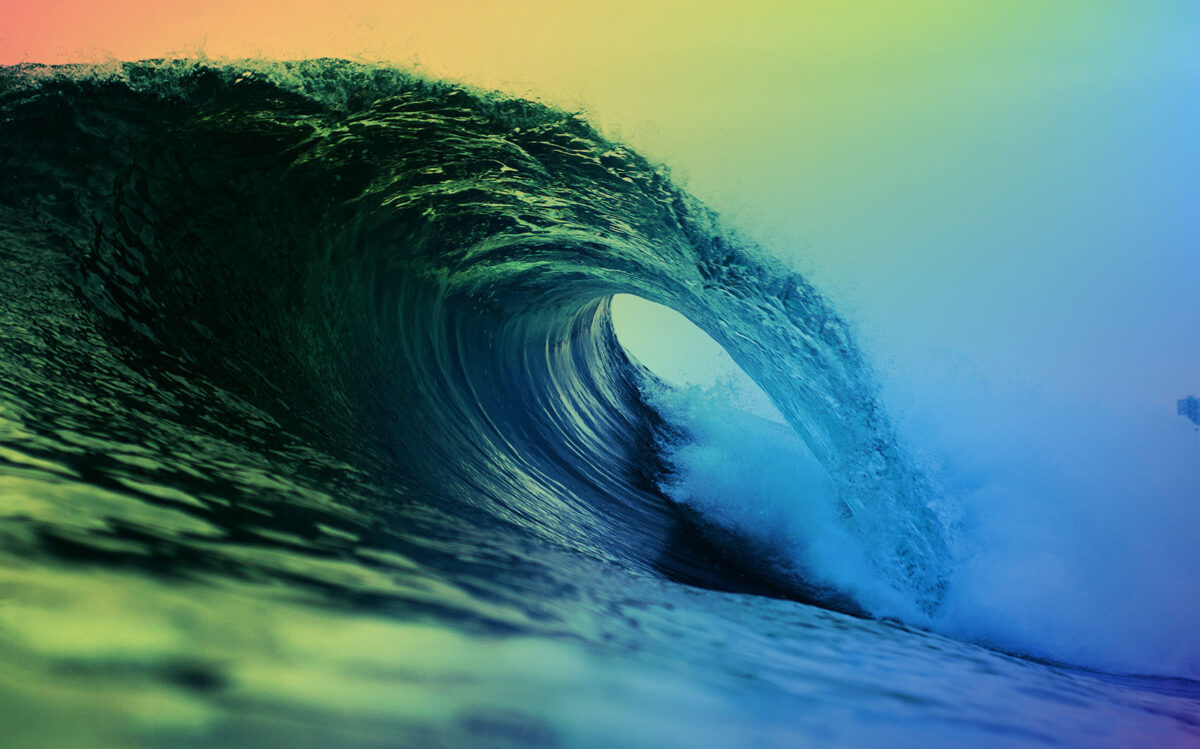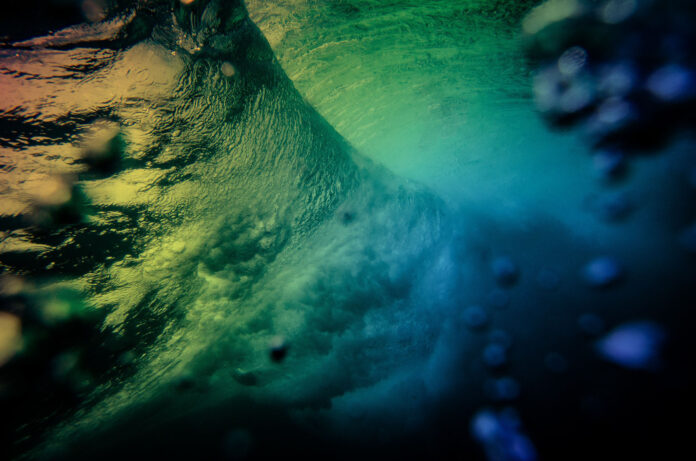(Almost) nothing can be more sensual than the surfing experience. The feeling of water caressing your head as you duck-dive beneath the first wave of the session. The sensation of dropping in. The feel of a rail perfectly edged into a tasty wall. The throw of spray. The surface texture on a glassy offshore day. The entire experience is mesmerizing and if you’re not aware of the beauty, slow down and spend a few moments being present next time you’re in the line-up.
But what happens when you catch your last wave and darkness swathes the beach? Eventually, you will find yourself in bed, where the realm of dreams beckons, and the ocean is as wild or as calm as our imagination wills it to be. In the dreamscape, many of us meet the surfing experience anew.
The purpose of dreams
Dreams, those captivating narratives that fill our sleep, have intrigued humanity for ages. Across cultures and centuries, they have been viewed as mystical messages, prophetic visions, and windows to our deepest selves. But what prompts our brain to concoct these intricate stories? Science offers some interesting perspectives.
According to the leading theory, dreams occur during the REM (Rapid Eye Movement) stage of sleep when brain activity is high, mimicking wakefulness. Neurological studies suggest that during this stage, the brain sorts, processes, and integrates the day’s experiences into our memory.
This process, known as the ‘Information Processing Theory,’ posits that dreaming is the mind’s way of sifting through the myriad impressions it encounters. It helps us process emotions and experiences, understand them better, and decide what to retain and what to discard.
But dreams are more than just mental housekeeping. They also play a crucial role in learning and problem-solving. Through dreams, our brains can rehearse scenarios, explore potential outcomes, and devise solutions — all within the risk-free environment of the dream world.
Furthermore, some researchers propose that dreams act as a form of emotional regulation. They help us cope with stress, trauma, or emotional upheaval. By reenacting certain experiences or emotions, dreams allow us to confront and reconcile with them, promoting emotional healing.
At a more existential level, dreams might also serve as a playground for exploring our inner selves. They can reveal hidden desires, unexpressed fears, or aspects of our identity that we may not fully recognize in our waking state.
In essence, dreaming is a multifaceted phenomenon intertwined with our memory, learning, emotional health, and self-understanding. It’s a testament to the brain’s remarkable capacity to create, process, and introspect, continually contributing to our evolving self.

Why do we dream about surfing?
Surfing, for many, isn’t just a sport or pastime. It’s a deeply ingrained passion, a bond with nature that becomes a part of our identity. It’s the thrill of the challenge, the communion with the sea, the camaraderie of the surfing community, and the simple joy of being in the moment, riding a wave. Each wave ridden etches a unique memory, and these experiences, soaked in emotional intensity, leave an indelible imprint on our minds.
When we sleep, these powerful memories often resurface in our dreams. The subconscious mind, the author of our dreams, draws on the depth of our emotions tied to surfing. The salt-tinged air, the rhythmic cadence of waves, the feeling of rushing adrenaline — these sensory imprints act as potent ingredients in the dream concoction.
In the dream realm, our love for surfing can manifest in various ways. For some, it could be a perfect replay of a memorable surf session, reliving the thrill and joy in vivid detail. For others, it might be an aspiration or wish-fulfillment, dreaming of riding that massive wave you’re working towards or performing a trick you’ve been practicing.
Surfing dreams could also serve as a comforting refuge, a means of escape during stressful times. The feeling of riding a wave, the freedom, the tranquility can be a counterpoint to the chaos or pressures of waking life, reminding us of our love for the sea and its rhythmic, meditative waves.
So, when you dream about surfing, it’s a nocturnal sonnet to your passion. It’s your mind echoing your love for surfing in the quiet hours of the night, painting pictures of the sea and the waves with strokes of imagination and memories. It’s a testament to the strong emotional connection you share with surfing, resounding even in sleep.
Types of surfing dreams
In the world of dreams, the ocean takes on myriad forms and meanings, reflective of our innermost thoughts and feelings. Each type of surfing dream serves as a mirror, reflecting different facets of our waking life.
Giant Waves could signify a variety of emotions. Riding a colossal wave with ease might reflect the thrill of overcoming significant challenges, while feeling frightened could signify apprehension about an impending event. If you’re constantly seeking bigger waves, it might symbolize a desire to push your boundaries and take on more significant challenges.
Weird or Dystopian Oceanscapes mirror the fluidity and richness of our imagination. Dreaming of surfing in an otherworldly seascape may reflect a longing for escape or adventure. On the other hand, it could suggest the dreamer is exploring unfamiliar emotional territories or grappling with profound changes.
High-Performance Maneuvers in dreams may suggest a surge in confidence or a sense of accomplishment. Dreaming of executing a perfect cutback or an aerial could reflect your competence and self-belief. Alternatively, it might reveal aspirations you’re harboring, urging you to step out of your comfort zone in waking life.
Not Being Able to Paddle Fast Enough could hint at feelings of helplessness or stagnation. This dream might arise from a situation in which you feel you’re not keeping pace, whether it’s at work, in a relationship, or personal growth. It signals a need to address what’s holding you back.
Sharks in surf dreams are often manifestations of fear or anxiety. Dreaming about sharks while surfing could reflect a perceived threat or an underlying worry in your waking life. The dream may be urging you to confront these fears and deal with the issues head-on.
Dreams about Falling or Wiping Out can symbolize feelings of loss of control or fear of failure. It can be a manifestation of anxiety about a particular situation or decision in your waking life. Analyzing these dreams can help you understand what’s causing this anxiety and how you can regain your balance.
Lastly, dreams about Perfect Waves could be your mind’s way of expressing satisfaction and joy. It may reflect a period of happiness and contentment in your life, or it could be a motivational symbol, encouraging you to keep seeking those perfect moments, both in surfing and in life.

Interpreting and integrating surf dreams
Dreams, especially ones about our passions like surfing, can be cryptic narratives filled with symbolic meanings. They offer a unique portal into our subconscious, presenting metaphors for our feelings, desires, and experiences. Understanding these dream symbols and integrating the insights they provide can lead to personal growth and improved problem-solving.
Interpreting dreams is akin to deciphering a personal language, where each symbol has a unique meaning based on your experiences. A giant wave in your surf dream might represent a looming challenge or opportunity, while a shark could symbolize fear or an unseen threat. These interpretations are deeply personal and can be understood best by the dreamer who knows the context in which these symbols appear.
To better interpret your dreams, start by recording them in a dream journal. Be as detailed as possible, jotting down not only the events but also the emotions you felt. This record will help identify recurring themes and symbols, offering clues to their meaning.
Additionally, consider your recent experiences and emotions. Has there been a significant event, a conflict, or a turning point that aligns with the dream’s narrative? Drawing parallels between your waking life and dream content can lead to valuable insights.
Once you’ve interpreted your dreams, the next step is integrating this understanding into your waking life. This involves conscious reflection on the learnings from your dreams and their application. For instance, if your surf dreams reveal a fear of taking on bigger waves, consider how this might reflect broader anxieties about tackling challenges in your life. Acknowledging this fear is the first step towards addressing it.
Integration also means harnessing positive insights from dreams. If you dream about successfully riding a massive wave, it might signify your readiness to overcome significant obstacles. Use this as motivation to tackle those challenges head-on, be it in surfing or life.
In essence, interpreting and integrating surf dreams involves a deep dialogue with your subconscious. It’s about understanding the language of your dreams, unravelling their metaphors, and weaving the insights gained into the fabric of your conscious life. By doing so, you’re not just understanding your dreams, but you’re also getting to know yourself better, one wave at a time.
Can you influence your dreams?
The concept of lucid dreaming provides an intriguing answer to this question. It suggests that not only can we become aware of dreaming while in a dream, but we can also exert control over its course and content. Here are some techniques that might help you influence your dreams:
Reality Testing: This technique involves checking your reality during the day with simple tests, such as trying to push your finger through your palm or checking if text changes when you look away and look back. The goal is to make these checks habitual, so they carry over into your dreams, helping you recognize the dream state and gain lucidity.
Wake Back to Bed (WBTB): This involves waking up after about six hours of sleep and staying awake for a while before going back to sleep. The purpose is to enter REM sleep – the stage of sleep where dreaming is most intense – while still being conscious enough to recognize that you’re dreaming.
Mnemonic Induction of Lucid Dreams (MILD): This technique requires you to wake up after a dream and, while returning to sleep, focus on the intention to remember that you’re dreaming. This involves repeating a mantra like “I will remember that I’m dreaming” to set the intention firmly in your mind.
Visual Induction of Lucid Dreams (VILD): In this method, you visualize a specific dream scene while falling asleep. The aim is to enter that scene as a dream, but with the awareness that you’re dreaming.
Dream-Exit Induced Lucid Dreams (DEILD): This technique is used upon waking up from a dream. The idea is to keep your body still and your mind alert, trying to reenter the dream while maintaining awareness.
Remember, these techniques require practice and patience. While using these methods, it’s essential to maintain a healthy sleep routine. Also, keeping a dream journal can be a great help in improving dream recall and becoming more aware of your dream patterns, aiding in lucid dreaming.
With time and persistence, you might just find yourself more frequently standing on the dream beach, feeling the dream sand between your toes, watching the dream waves roll in, and knowing you’re about to surf your dream session exactly as you wish.







